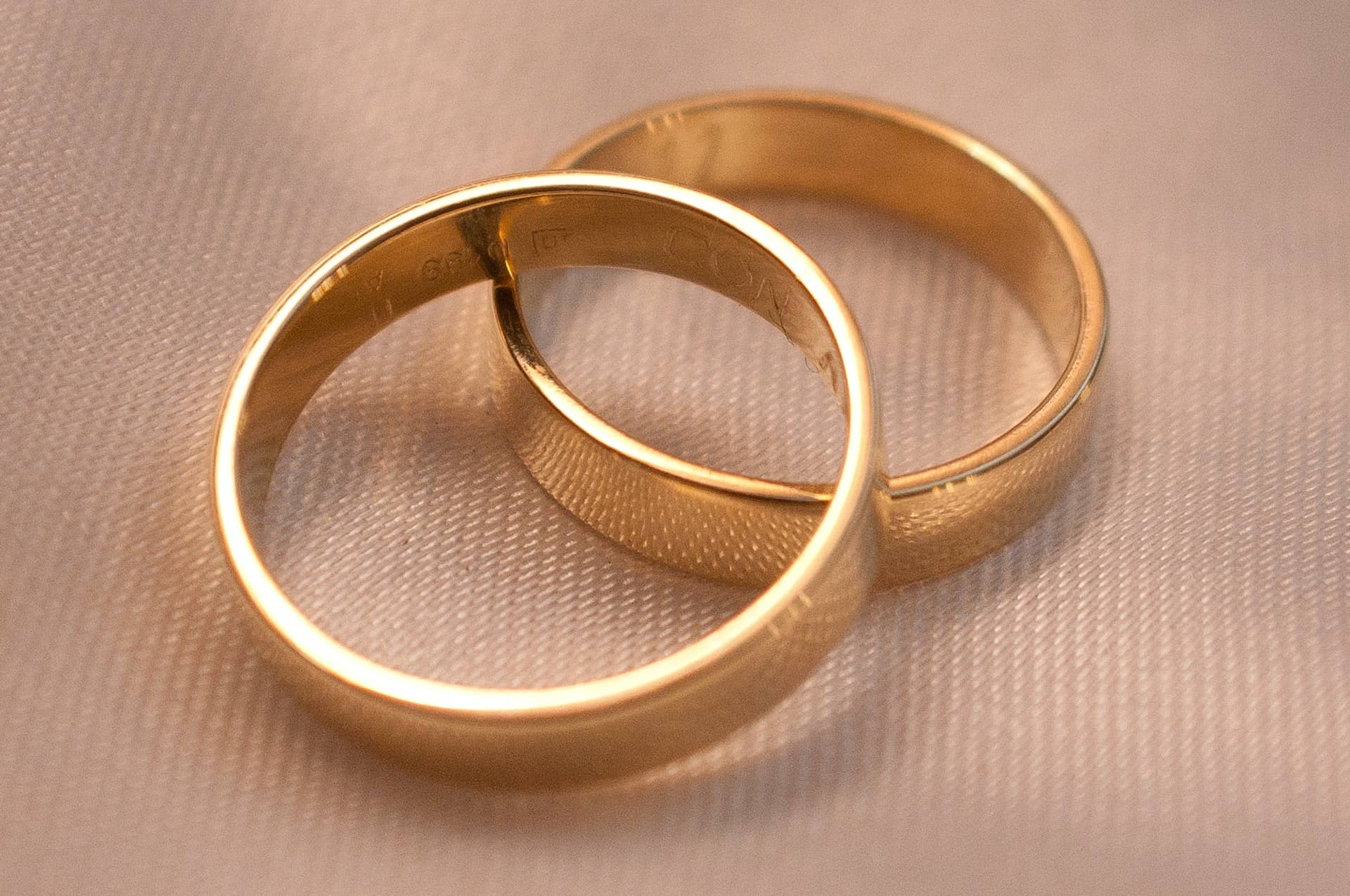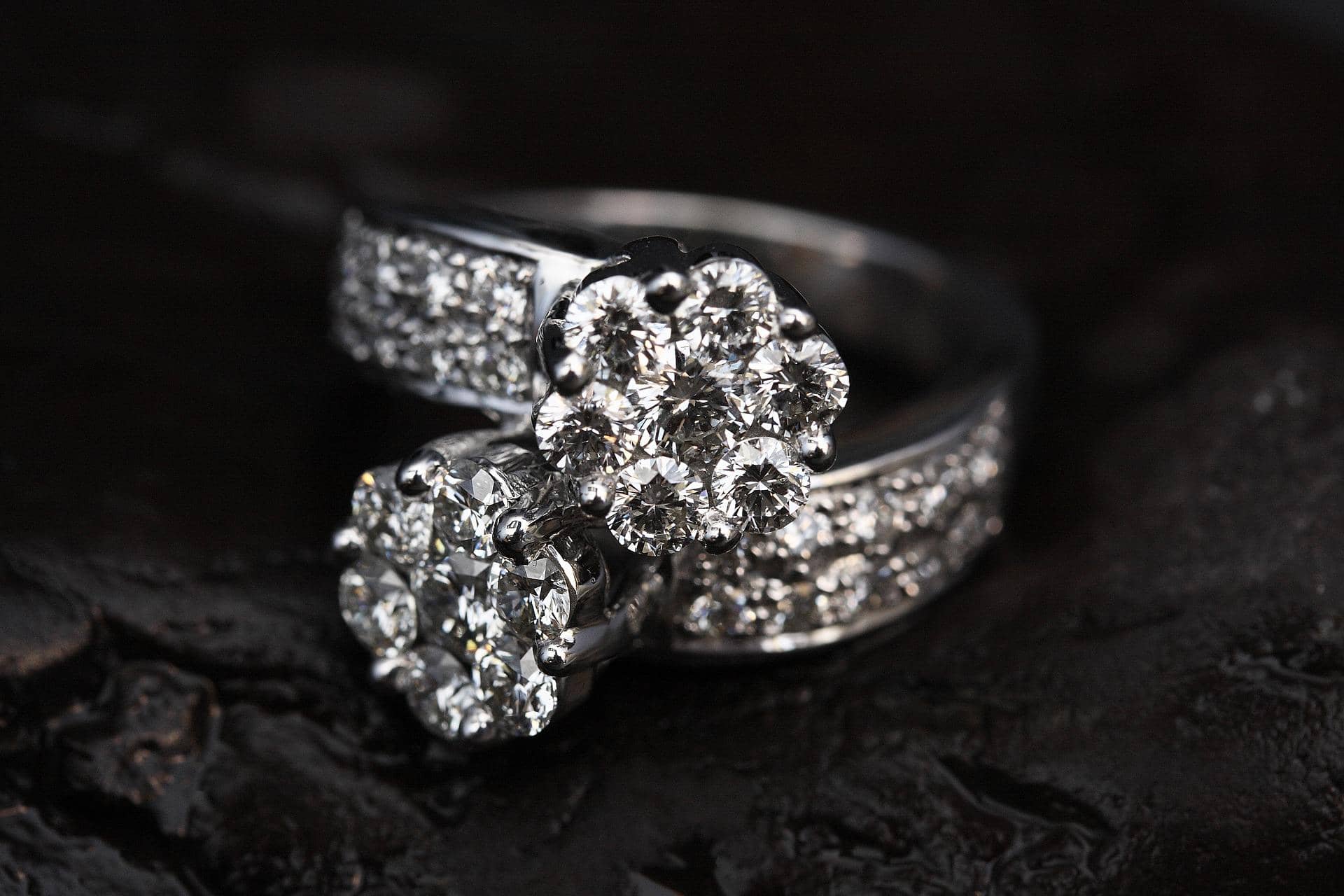Gold has been the most popular precious metal used to create fine jewellery for centuries. Traditionally only available as yellow gold, over the years several variations of gold have been introduced by mixing yellow gold with other alloys. Today, white gold and rose gold are some of the most stylish types of gold variations.
The History Of Gold
Before we get into the different types of gold that are used to create engagement rings, solid gold chains, earrings and more, it’s important to know why, of all metals, gold has become so popular for use as a fashion accessory.
One of the key reasons gold has been used in rings and necklaces since 4000 B.C. is because it’s one of the least reactive metals available, meaning that it won’t corrode when in contact with oxygen, water, alkalis and acids. This means your precious piece of gold jewellery can be treasured for years to come, without fear of the metal corroding or tarnishing over time.
Gold’s durability alone would be enough to have jewellers working around the clock to create long-lasting pieces of jewellery, but not even that is necessary, as gold is also extremely pliable. It can be easily moulded into shape to create even the most detailed pieces.
Though there’s something undeniably special about pure 24-carat gold, in its purest form, it’s simply too soft to hold up against everyday wear. However, this is a problem that is easily solved by alloying the gold with other metals such as silver, copper, and zinc. This part of the process affects the appearance of the final product, leading to other variations such as white and rose gold.
For more information, check out our blog post on the brief history of gold.
What Is Yellow Gold?
As the traditional choice of gold, yellow gold is a timeless style that will always be one of the most widely-used metals in fine jewellery. It’s particularly popular for vintage-style jewellery and is by far the most common type of gold used in chains, bracelets and pendants.
Yellow gold jewellery is unlikely to be 100% pure, despite its more natural appearance compared to white or rose gold pieces. This is due to the alloying process which ensures that the gold jewellery piece can withstand day-to-day wear. This process is used for white gold and rose gold too, meaning that each of the different types can be found in a range of purities.
Measuring The Purity Of Your Gold
As you will probably know, 24-carat gold means that it is 99.99% pure, so this can be used as a benchmark to measure the carat amount of your yellow gold jewellery. For example, if a gold ring is 50% gold and 50% Zinc, then the measurement would be 12/24 parts pure gold. Due to it being an extremely malleable metal, the closer to 24 carat the gold is, the less durable it will be.
You may be wondering whether the alloying process will diminish the appearance of the final product as the gold content is essentially being diluted, but it’s quite the opposite. Not only are jewellers able to create a stronger piece of jewellery, but the colour created by mixing the two metals can be extremely attractive and just as beautiful as a pure 24ct gold piece. This is why 14ct and 18ct gold is typically used for wedding rings as it gives them an elegant and alluring look whilst remaining durable enough to be worn every day.
How To Wear Yellow Gold With Style
When it comes to choosing which type of gold jewellery you’d like to wear, you really can’t go wrong with yellow gold. Its appearance is classy yet timeless and has the ability to stand out against your other accessories. One thing you will have to bear in mind, however, is that yellow gold jewellery that has a particularly high carat content can be scratched easily and will need to be properly cared for. There are plenty of methods that can help you look after your yellow gold though, which include polishing it with a specially made cloth, soaking it in a degreasing solution and cleaning it with a soft-bristled toothbrush.
You don’t have to wait for a special occasion to don yellow gold jewellery either, as it’s commonly worn as a fashion accessory for both men and women. Whether paired with a royal blue men’s suit, violet midi women’s dress or other clothing combinations, yellow gold can offer an excellent contrasting colour to your outfit. Coupling a yellow gold ring with a gold watch or silver bracelets can help you create a dynamic and modern style.
How Is White Gold Made?
White gold is created by mixing yellow gold with a white metal such as palladium, silver, or nickel. Combining gold with one of these metals is what gives the alloy its striking white colour. This is one of the key differences when looking at rose gold vs white gold, as rose gold is alloyed with copper to achieve its unique ‘rose’ colour. Much like yellow gold, which is also alloyed, the purity of white gold can be defined by the number of carats included in the jewellery piece. Not only does this alloying process help achieve a shiny silver colour, but it also strengthens the metal. Typically, white gold includes nickel which helps to reduce the likelihood of corrosion and wear-resistance alongside giving the metal a much brighter appearance.
Completing the Look With Rhodium
A rhodium coating is often added to white gold jewellery to give it that striking bright white look. One of the few downsides of white gold is that the rhodium plating often wears away over time, requiring a re-plating every year or so. However, many jewellers offer this at an affordable price, so this shouldn’t stop you from choosing white gold for your next piece of jewellery.
White Gold vs Platinum
In recent years, white gold has become a popular alternative to platinum jewellery. The two metals look almost identical to the naked eye, yet white gold is usually more affordable than platinum. There are also different benefits to each option, with white gold typically being more scratch-resistant and harder-wearing. Platinum, on the other hand, will do a better job of holding any embedded diamonds in place over the long term. That being said, they are both very durable and perfect for wearing on a daily basis.
Although similar in appearance, you will notice a difference between the two when placed side by side. White gold has a brighter, shinier look, while platinum will appear more grey in colour. This is one factor you should consider when making your choice as one may complement your other pieces of jewellery better.
The Benefits of White Gold vs Yellow Gold
One of the key benefits of white gold, other than its alternative appearance, is that it’s thought to be slightly more durable when comparing white gold vs yellow gold. This means that white gold jewellery is generally less prone to wear and tear, resulting in fewer scratches and making it more suitable for those who are wearing their white gold accessories all day every day, such as a beautiful engagement ring or bridal set. White gold isn’t indestructible though and will still need some care and attention, such as polishing and cleaning which you’ll be able to do at home.
Opting for white gold jewellery is always a safe bet as its neutral colour will pair well with both casual and diverse items of clothing. It’s a colour that can look stylish with both a smart/casual shirt and jeans or a bold dress for a formal event. The diversity of white gold has cemented its popularity amongst a variety of jewellery pieces such as necklaces, chains, bracelets, rings and more.
All You Need To Know About Rose Gold
Rose gold has a stunning appearance and really stands out when compared to both yellow and white gold. Following the same process to create white gold, rose gold is also an alloy, although copper is used instead of nickel or other white metals. The use of copper is what makes rose gold look so unique and earn nicknames such as pink or red gold. This type of gold has always been extremely popular amongst various countries since its creation and has stood the test of time, so much so that it even debuted as a colour option for some smartphones in 2015.
When it comes to jewellery such as engagement rings, rose gold offers an elegant alternative to the classic yellow gold style. This rosy pink colour not only looks unique but also has connotations of love and intimacy – perfect for gifting to the person you want to spend the rest of your life with. For those looking at more casual accessories, rose gold is also a great choice for achieving a slightly retro look, as the copper colour gives the jewellery a vintage feel. Pair this with white or yellow gold and you can create an excellent depth of colour throughout your jewellery pieces.
Don’t let its mellow appearance fool you, however, as the rose gold alloy is actually stronger than both white and yellow gold. This is largely due to copper, which is a very resilient metal, helping create an extremely durable piece of jewellery. This means that not only are you getting a stylish and unique look from your rose gold jewellery, but you’re also getting a piece that will stand the test of time.
What Are The Differences Between Solid And Plated Gold?
In simple terms, the key difference between solid gold and plated gold is that solid gold items are made from a gold alloy (such as yellow, white or rose gold) and plated gold items are made from different metals and only features a thin coating of gold. Don’t worry if you’re not sure whether your items are solid gold or plated as there are a few easy ways to tell. The easiest ways to spot the difference between real and fake gold is by checking your piece for a hallmark, analysing its colour or by using a magnet.
One of the main differences between solid gold and gold-plated jewellery will be the colour of the gold. Solid gold jewellery is alloyed with another metal, essentially diluting the natural colour of the gold. When a piece is gold plated, however, the gold won’t be alloyed and will instead retain its more natural bright yellow appearance. However, your shiny gold-plated pieces won’t stay that way for long. Gold plating easily gets tarnished so you’ll soon notice the gold looks worn in some areas, exposing the metal underneath and giving you a clear indication that it isn’t solid gold.
Another method, which isn’t entirely foolproof for a couple of reasons, is to use a magnet to test your gold. Pure gold is a non-magnetic metal, meaning that if you tried to pick it up with a magnet, it simply would not work. This means that if your piece of jewellery is gold plated, with the base metal being magnetic, you will be able to pick it up with a magnet. The reason this isn’t reliable, though, is that the base metal may not be magnetic either, leaving you none the wiser. This leads us to the most consistent method of testing: acid testing.
Acid testing is typically carried out to determine the karat of the gold, but it can also be used to identify which other metals your gold contains. This is done by taking a small sample of the gold piece, applying acid and identifying whether or not there is a change of colour. This change in colour will indicate which metals the sample contains, giving you a clear indication as to whether your gold is solid or plated.
Knowing the difference between solid gold and gold-plated jewellery is an essential piece of knowledge to have when shopping for a new piece of jewellery.



